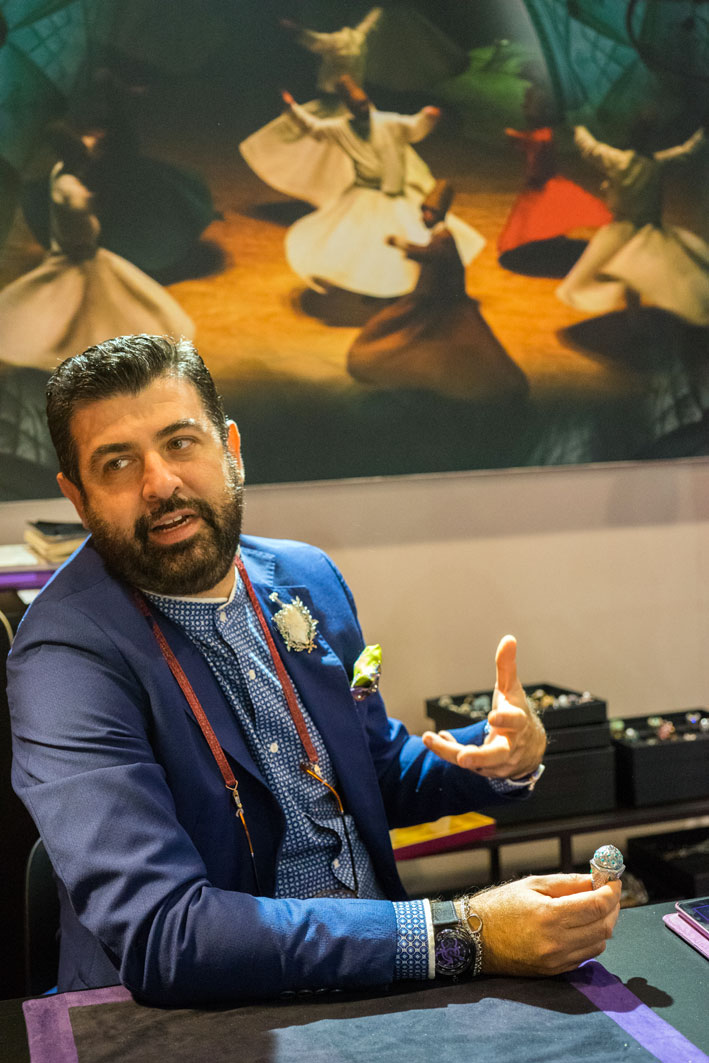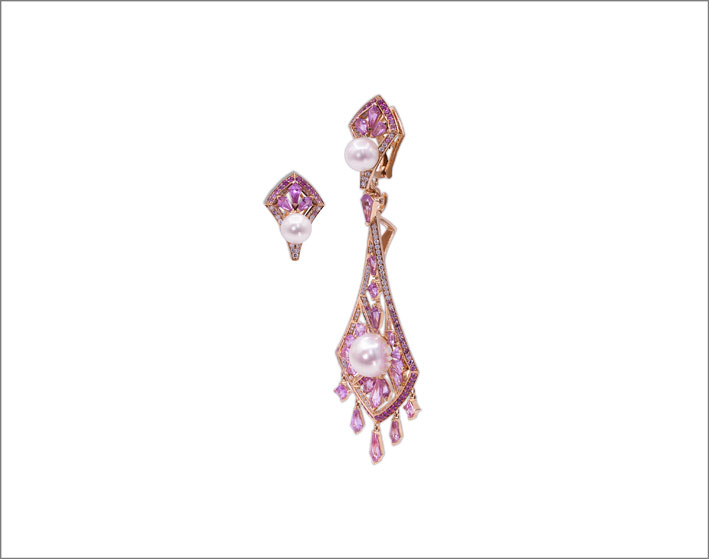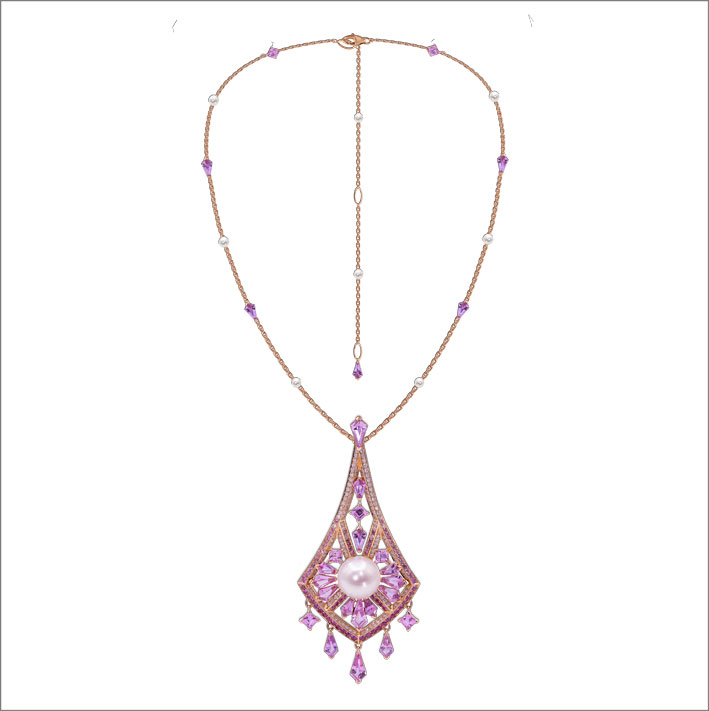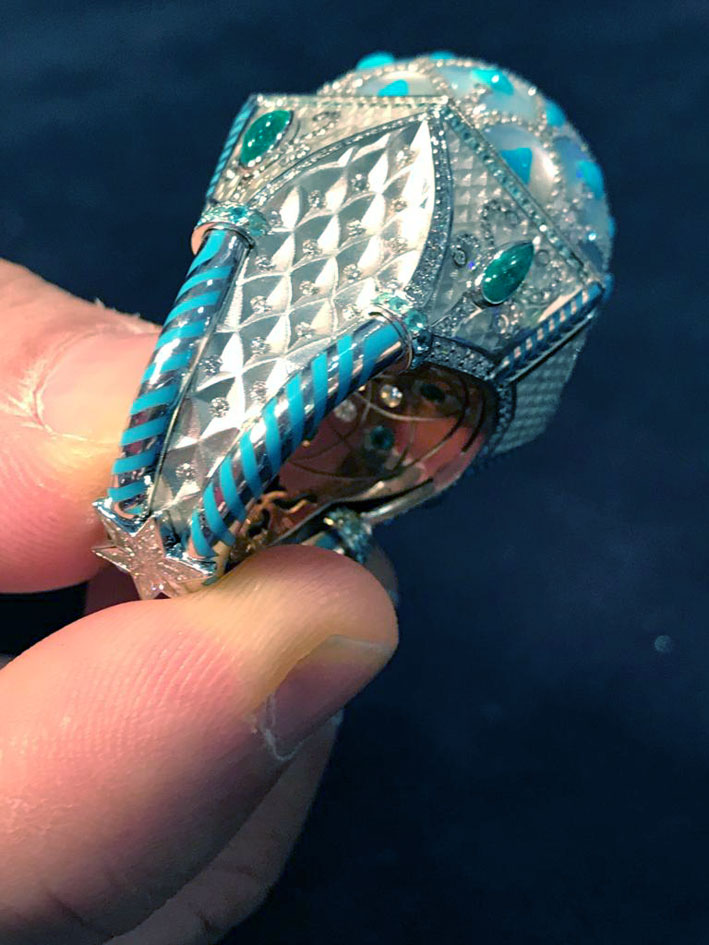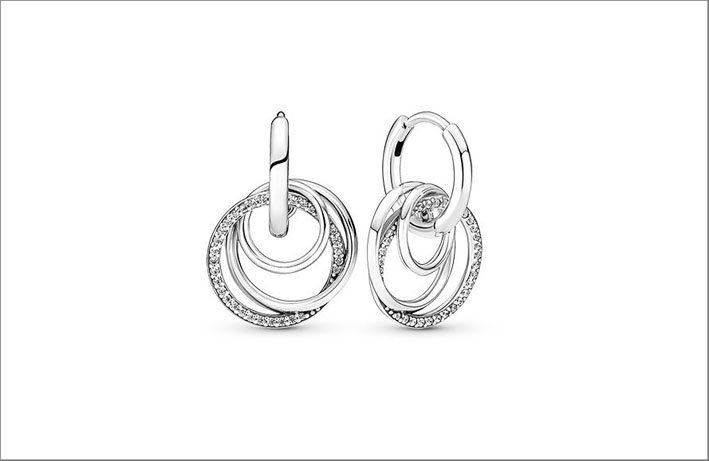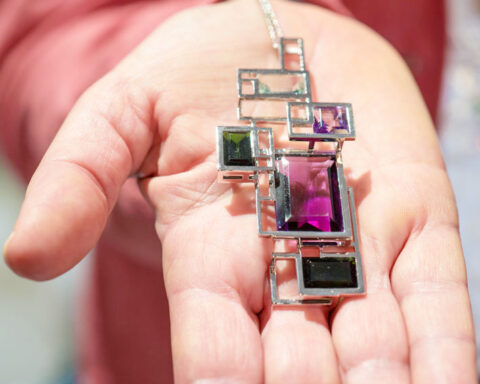Alessio Boschi is a Renaissance jeweler. That is, he is not satisfied with designing and making simple rings or necklaces, but he has an interdisciplinary attitude: he draws, collects images, is inspired by artists, architects and poets. And above all, he tells. His most famous pieces are not just jewels, but entire stories that Alessio Boschi tells through myths, travels and traditions. For this reason the most extraordinary pieces of him themselves become concentrates of narration, jewels with different semantic levels: the aesthetic one, obviously, the one related to their material value, and the more fascinating one, related to the cultural dimension that inspired the object. A perfect example of this way of interpreting jewelry is the latest creation by Alessio Boschi: a ring is dedicated to Rumi, an Iranian poet of the thirteenth century.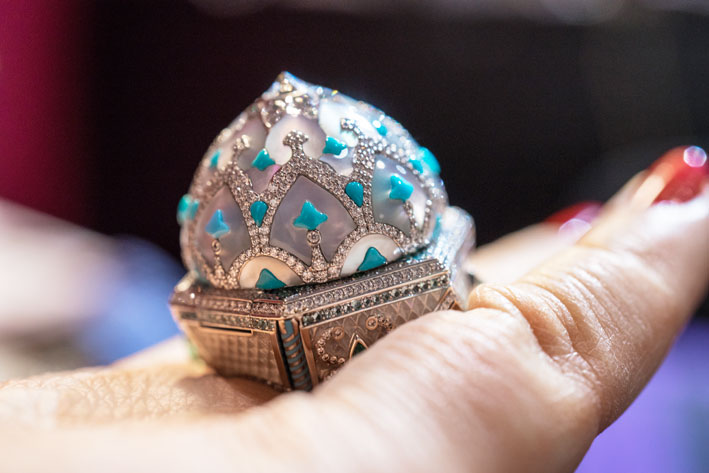
Fascinated by the traditions of the Persian world, the jeweler was fascinated by the strongly spiritual verses marked by Rumi’s personal and meditative relationship with the divinity. An approach that Boschi still felt very current in the period of the pandemic, which favored introspection and reflection. As always, in his creations the incredible technique in building a jewel starts from a very precise idea: in this case the rotating movement of the ring recalls the dance of the dervishes, a practice that consists in turning on oneself to the sound of music for forget the ego and focus on God. The round shape takes up the dome of the mausoleum of Mevlana, in Konya, in the arid Anatolian steppe, where the poet died. Turquoise are the twisted columns inside the building. And under the dome, which opens, Alessio Boschi has reserved a surprise, his specialty.